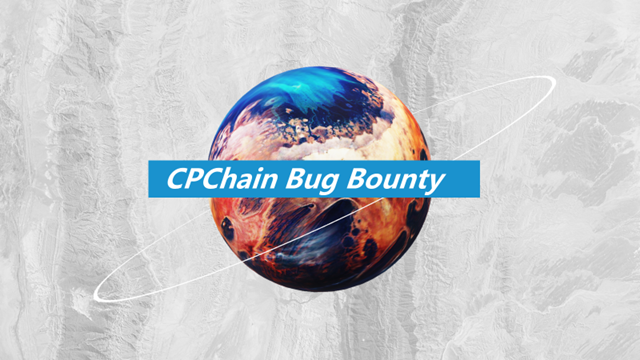CPChain — Technical Community AMA
by CPChain at July 11, 2018

Welcome to the 2nd Community AMA (Ask Me Anything) of CPChain. The launch of our PDash platform was a monumental step in the progress of CPChain. And so we invited our community to ask technical questions regarding the CPChain platform, we are glad to present you with the Q&A.
Q:
How is cpchain incorporating GDPR (General data Protection Regulation) in their infrastructure? This will be one of the most important regulatory requirements globally for all block chains.
In PDASH for example, I’ve read that the main chain contains the hashes of the data. Is this a hash of the data itself or is it the hash of proof that data is not tampered with? Only by being GDPR compliant, Cpchain could flourish.
A:
CPChain places user privacy at a very important position. The main chain contains only the hash of data for information verifications; the original data will be effectively protected in our system.
Q:
How complex is for CPChain to operate as a side-chain with other projects?
A:
Technically, with proper deployment alongside partner projects this will be feasible. However, CPChain will have a main-chain and side-chains on its own platform; allowing us to focus more on assisting other projects launch on our mainnet.
Q:
Concerning the pilot running at the Shanghai Jiao Tong University; what kind of data is currently being processed from the electric cars, and how is it used? Is it just tracking movements, or using collected data as input for AI learning?
A:
We are primarily processing car driving data including location data and battery levels through the CPChain platform for data convergence and storage. The electric vehicle data will be further used to construct an electric vehicle sharing scheme.
Q:
What will be the minimum number of nodes required to add a block and does the number of nodes impact on overall performance? Also as CPC will be using a two layer committee consensus mechanism when a block is added will the distributed probability luck value be more effective at preventing a 51% attack on the network than existing algorithms such as Byzantium Fault and proof of work consensus algorithms’ and how have you tested this?
A:
We require a minimum of 21 commissioners to add blocks based upon our reputation evaluation model in the network. The number of committees will be limited within a certain range, since too many committees will increase the time required for consensus. Currently, we have completed the initial simulation test for our P2P network. The next plan is to test throughput and latency performance in different network sizes. Various attack patterns will be considered after the previous test has passed.
Q:
What kind of storage solutions will be possible in the system, and will decentralized storage systems also be added in the future ?
A:
Currently in our PDash release we are supporting both centralized storage systems (Amazon S3) and decentralized storage systems (IPFS). We have also completed design of the Open Transmission Protocol (OTP) which will be able to provide our system with outstanding scalability by supporting data transmission between arbitrary external storage systems and our system. The implementation of OTP is on its way. You can expect to meet our novel and powerful protocol in our next release.
Q:
Will CPChain be using partial homomorphic encryption (i.e. RSA) or are full homomorphic encryption implementations being considered? What specific implementation is being developed (TFHE, HElib etc.)?
A:
Currently we are using the AES and RSA encryption algorithms to protect user privacy. Homomorphic encryption technology is on our schedule and in the future we will consider combining homomorphic encryption technology within our system.
Q:
From the pdash paper:
The last part (line 15 to 17) of the algorithm is calculating the hash value of data and uploading it to blockchain, and adding a description into the local description file.
So if I’m understanding correctly, it doesn’t appear that the text is encrypted (and if it is, then there is the challenge of searching over encrypted text). As such, there may be a risk that someone would be able to reconstruct an owner’s profile by aggregating descriptions, or generate statistical models based off of descriptions (e.g. P(Heart Failure | Kidney problems)) without need for full data. Conversely, encryption of descriptions, I would imagine, poses a different problem. While I have seen another block chain propose an approach where they encrypted the description vector and added additional noise, there was a trade off for search efficiency that was query dependent.
So my question:What is CPChain’s solution to generating efficient and consumer friendly searches while maintaining user privacy and economic benefits?
A:
Data is absolutely safe in PDASH, all the data is encrypted at the client side. The description file is for the decentralized market. In the current PDASH release we run a centralized market server so that others can not access all descriptions of data. We support efficient and natural language search of data. Our next plan is to implement a decentralized data market and the privacy issue of description you mentioned will be under our consideration.
Q:
Will CPC still be able to be put on to the hardware wallets available to erc20 tokens?
A:
Yes, CPChain will be compatible with hardware wallets.
Q:
In the PDASH video did the PDASH software actually interact with the blockchain?
A:
All of our transaction logic is handled through the Blockchain, these logic operations are executed in the background and cannot be reflected in the User Interface we provided previously. Our community are more than welcomed to check the code!
Q:
PDash’s DHT code is patented. Can you tell us more about the significance of this patent? And will you fully open-source the codes (as it should be for a decentralized & open-source blockchain)? If yes: how will you prevent others from “copy” it?
A:
We will open source codes gradually until we are fully open sourced, since if it is entirely displayed the risk of being copied will rise. Our thought is that since we’ve decided to open source, we have already prepared well for the potential “copy”.
Q:
Will we need hardware in order to run the biggest node? Can you run more than one node? I have not run a node before and have looked at the “beginners guide to running a node” and I still don’t have a clue — will you offer support for this please?
A:
We are developing a set of DPOS consensus protocols based on reputation evaluation model. When our main chain is online, we do not need Hash calculations to mine. Take an active part in the node ecosystem that will be released later. All participants will have a chance to mine successfully and get financial incentives.
Q:
About the devices which generate data, is CPChain developing software or hardware for this purpose or defining a protocol how this devices will generate their data and exchange it with the network where it is connected with? Can these devices also connect to other networks or to CPChain network only?
A:
We will develop a hardware wallet to support IoT devices. In the PDASH data network, we do not limit storage type of users. They can store their data in amazon S3, IPFS, or anywhere else. We have developed a open transmission protocol(OTP) that allows PDASH to compatible with any kinds of external storage.
Q:
Hi CPC team! I’ve been following you since the end of January and have been seriously impressed with the solid progress you’ve all made to date. Keep up the great work! :) Question: What are the packet size limits within the ICN (PDASH) network? In other words, when a large data object is requested and segmented into multiple data packets (for transmission throughout the network) — how large are the individual data packets that make up that object? What considerations went into determining these limits?
A:
The current version of PDASH has some improvements in the area of storage, we don’t limit the type of storage, and users are free to choose where to store their data. It can be distributed IPFS, or it can be a centralized cloud storage platform, such as Amazon S3. If IPFS, service providers are responsible for these issues. We have a set of OTP protocols that are compatible with all types of external storage.
Q:
Specifically, could the encrypted data partitioning aspect of the distributed storage process be described in more detail than is available in the white paper? (i.e. how is load balancing optimized, what are some of the performance/data availability considerations etc.)
A:
The data relay is carried out by the proxy network which is DHT based system. When proxy is of high load the request will be routed to another proxy, alleviating hotspots in the network. Other than load balancing, the proxy network also assist GEO aware data transmission and take part in transmission accounting and auditing.
Q:
Can you tell a bit more about the data market? Is the data market centralized or decentralized? If centralized, is this a service provided by CPChain? If so, do we get multiple data markets eg segregated for different sectors or to overcome scalability issues? Or is it an application which is run on the client side which communicates with the main chain? Thank you for your answer.
EDIT: can a company utilize the CPChain ecosystem without selling its data on the data market? So only use the storage solution for internal usage, or perhaps share with a select 3party.
A:
The data market for now is centralized while the transaction process will be decentralized. The market internal components,including ElasticSearch, can be extended horizontally. Different industries can be tagged differently.
For enterprise level client. They certainly can store the data temporarily through CPChain market place. However, without publish, no one can have access to the data.

As always, we encourage our community to continuously raise questions and discussions regarding our platform.





